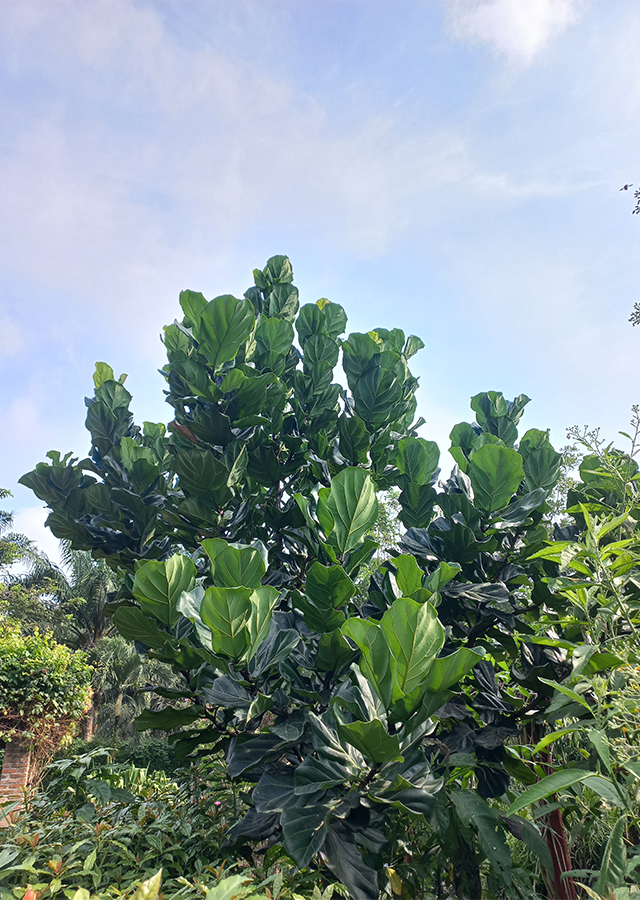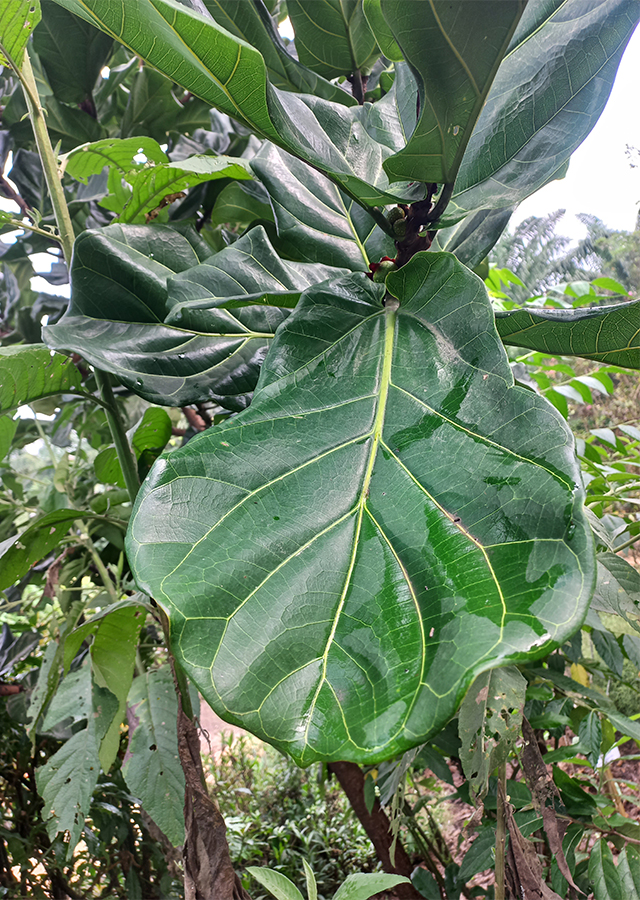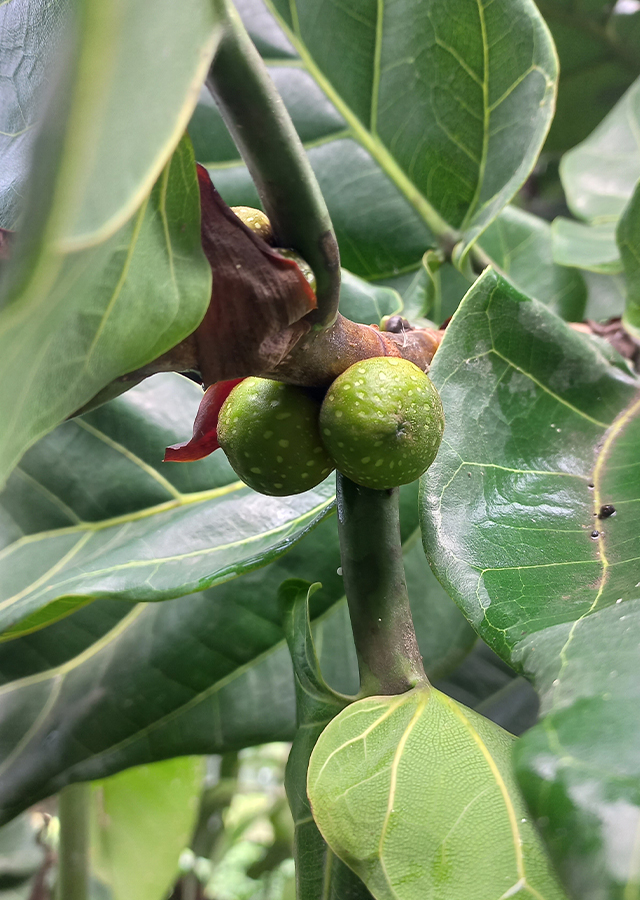Traditional Herbs from Ficus lyrata
treating_anxiety
- Prepare enough ketapang violin leaves, wash them thoroughly.
- Boil until boiling.
- Let it warm/cold.
- Strain then drink to treat anxiety.
What is Ficus lyrata Looks like??



Parts of Ficus lyrata that could be used
- Leaves
- Fruit
- Latex
- All Parts of the Plant
Ficus lyrata Distribution
Ketapang violin or Ficus lyrata is a plant from the Moraceae family that originates from tropical West Africa and Central Africa, has been introduced to Asia (Indonesia, Pakistan, Singapore), Europe, North and South America, and is cultivated throughout the world, including the West Indies. This species has long been cultivated by people as an ornamental plant (both indoors and outdoors) in tropical and temperate climates, and has benefits as a shade plant, medicinal plant, food source, latex and wood, source of natural clothing dye (produces color purplish red), also known to have social significance, as used in some places or cultures in magic (amulet tree).Agroecology of Ficus lyrata
Ketapang violin grows in low to medium altitudes and in pramontane moist rainforests. In Colombia, this species is reported to grow at an altitude of 1,000-1,500 m above sea level. In Indonesia, this species grows almost in all parts of the region, usually growing wild on beaches or on the side of the road. Viola ketapang has a high tolerance for drought and can grow in full sun, partial sun, or partial shade. This species also has a moderate tolerance to aerosolized salts and can grow in a variety of soil types including sand, clay, clay, alkaline, and acid as long as the soil is well-draining. Viola ketapang does not like excessive watering. Too much or too little water and insufficient light will result in the death of the old lower leaves.
Morphology of Ficus lyrata
- Tap and fibrous roots.
- Stem solitary, woody, with bark that is shallowly cracked gray.
- Single or unifoliate leaves, leaf arrangement is alternate, green, shiny, glabrous, leathery , large, thick lamina ovate to lyrate (lyre-shaped) or pandurate (violin-shaped), about 15-30 cm long, leaf edges flat-wavy, leaf base cardiac. (cordate), almost truncated and very short tapering at the apex, glabrous, veins pinnate, lateral nerves 4-5 pairs, yellowish veins prominent on the upper and lower surfaces. Stipules narrow triangular-lanceolate, pointed, glabrous, persistent .Sturdy-stemmed, glabrous, grooved.
- Flowers numerous, cream colored, hidden on the inner wall of the synconium receptacle, with male flowers / galls (sterile) and female found in separate synconium on the same tree. Male flowers: sepals 2-3, ovate-lanceolate, stamens solitary with ovate anthers. Female flowers: 3 sepals, ovate and obtuse, short pistil stalk with papillate stigma.
- Fruit round, fleshy hollow synconium, green with depressed yellow spots, very dense and hard, not stemmed, in pairs in the leaf axils at the tips of the branches.
Cultivation of Ficus lyrata
Plant propagation by seeds, stem cuttings (using rooting hormone), and layering (using 1 - 2 year old branches).
Ficus lyrata, more details :
Chemical Content of Ficus lyrataAlkaloids, phenolic compounds, tannins, terpenoids, orientin, benzoic acid, caffeoylquinic acid, fatty acids and sphingolipids, flavonoids (including catechins/ procyanidins, O- and C-linked flavonoid glycosides), arabinose, β-amyrin, β-carotene, β- sitosterol, xanthotoxol. The main procyanidins are dimers and trimers consisting of (epi)catechin and (epi)afzelechin units, while the dominant flavones are C-glycosides or luteolin and apigenin.
Benefits of Ficus lyrata
Treats respiratory disorders (asthma, cough, sore throat), gastrointestinal disorders (colic, indigestion, loss of appetite, and diarrhea), inflammatory and cardiovascular disorders, controls diabetes, treats conditions such as fungal infections, treats anxiety. Has antimicrobial, antibacterial and antioxidant activity.
Simplisia of Ficus lyrata
Another Facts for Ficus lyrata :
Synonym of Ficus lyrataFicus pandurata Sander
Habitus of Ficus lyrata
Tree. Annual tree, grows up to 12 m tall when planted in the ground, but can reach 30 m in its natural habitat
Habitat of Ficus lyrata
- Forest", "Coastal", "Roadside", "Land
No comments:
Post a Comment